Mount & Blade II: Bannerlord Review
Medieval battlefields and political meddling
Original ideas are always difficult to come by, let alone execute upon. This is doubly so for smaller studios and limited budgets. But that's exactly what TaleWorlds Entertainment managed to do way back in 2008, with the release of Mount & Blade. The medieval RPG put a new spin on the Total War formula, letting players assume control of a hero and try to build their empire in a grand strategy interface, while also being able to participate in real-time third-person battles. Despite many rough edges and limited production value, this unique blend of gameplay types created quite a devoted fan following for the series. The Warband expansion followed in 2010, and With Fire & Sword in 2011. In 2012, the sequel was announced, but it took ten years and a stint in the Early Access program before the game finally saw the light of day. Mount & Blade II: Bannerlord continues to offer a unique blend of gameplay experiences, and has a few promising ideas and very exciting battles, but the grand ambitions of the developers are yet to be fully realized.
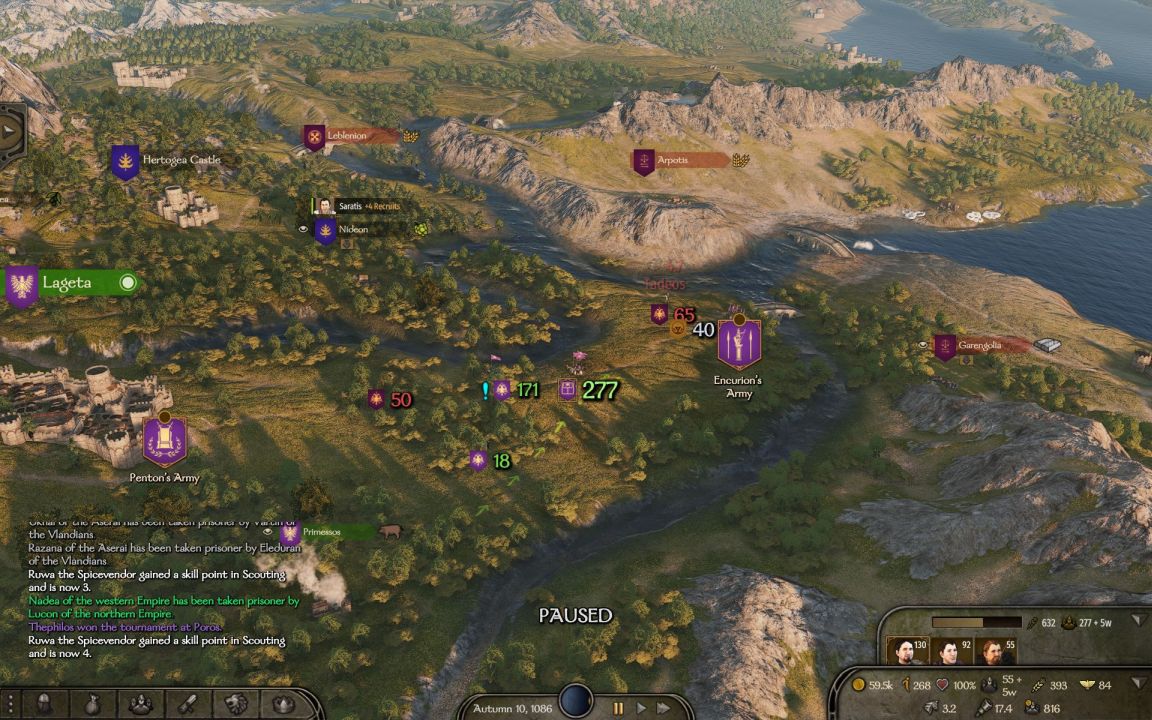
There are two modes available – campaign and sandbox. There are not many differences between the two, which is actually a knock against the campaign. There is a thin story about you and your family becoming separated, then reuniting, and eventually striving to establish your clan as a dominant force in the lands. However, the main quest is very poorly handled and described, leading to large gaps of hours where you're not sure what to do next. It's a very thin narrative that does a poor job of helping the players along in their journey from a nobody to a renowned Lord. If you're expecting a more typical RPG campaign experience, Bannerlord is very much lacking in this department.
Not having a proper campaign to follow is a double-edged sword because the game also lacks a good tutorial. There are some mechanics that players can figure out on their own, but there's absolutely no handholding or explaining even the basics of the grand strategy aspects. You do get a tutorial on the combat – but it's actually useless in the long run, for reasons we will explain later. The initial campaign missions have you gather a small force and rescue your brother – after which time, the game actually strips you of all troops and loot that you have gathered. It's like getting the rug pulled out from under you just as you were starting to get into the experience. You are then a lone man, or woman, standing on the large map of the game world, as bandits encircle. You're likely to be attacked and heavily outnumbered, and if you don't wish to exploit the game's poor AI by simply shooting arrows at the enemies from a distance, you will probably fall and get captured. After a few days, you will be set free. It's not exactly a fun start, and as a player (especially those who are newcomers), there's not much you can do to avoid this.
But you persevere, and make your way to the nearby villages and towns. You do have some starting gold, that can be used to recruit some pitchfork-wielding volunteers to join your banner. Managing your troops also includes keeping them fed (having food in inventory), loyal (by not losing battles all the time), and paid. As units earn experience, you can promote them to higher tiers like in an RTS, giving them better equipment and eventually choosing roles, such as making them either pikemen, swordsman, or even mounted archers (which requires horses in inventory). The different kingdoms have different unit types, so you can end up with a vast variety of troops with different weapons and looks.
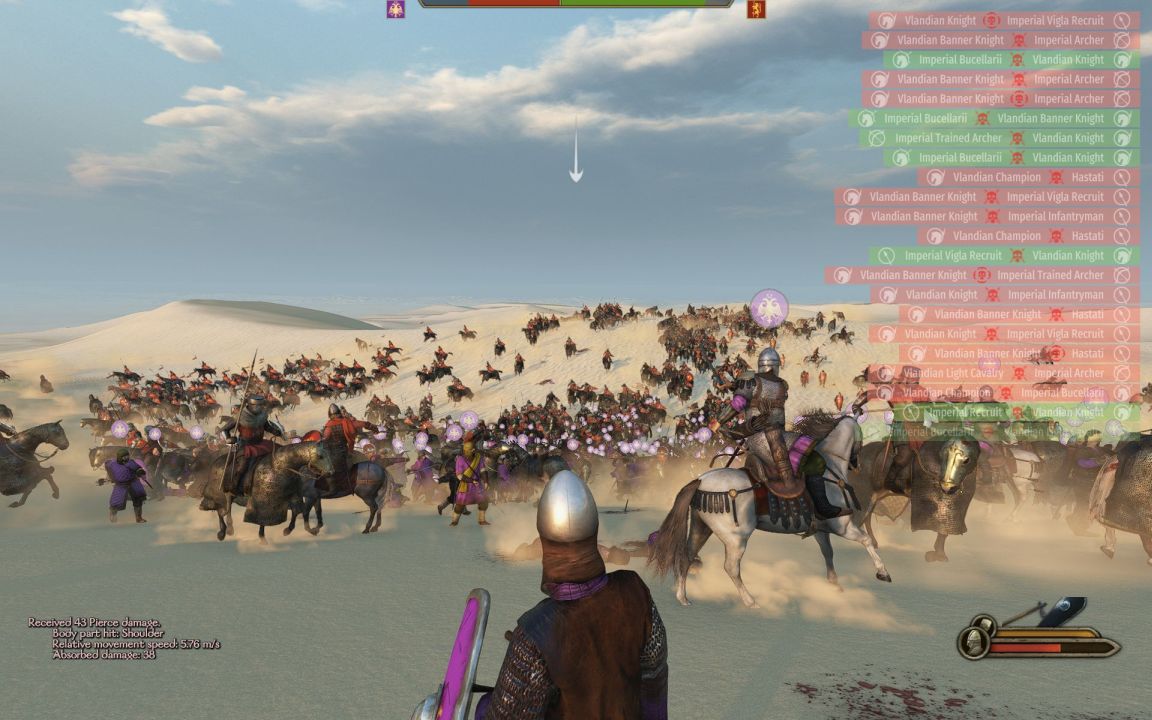
With a few men in tow, you can begin taking on requests from the locals. They will ask you to do things like bring them resources, escort trade caravans, make deliveries, and so on. The questing system is unfortunately extremely repetitive, and as you explore the world, you will find the same quests in each town, over and over. While all NPCs are uniquely named, all of the dialog options are also very much the same. The game world is large, and so with a limited budget, the developers could never hand-craft its content. Unfortunately though, with the main quest being so lacklustre and limited, you have little choice but to grind these repetitive side quests to keep growing your troop and gold reserves.
Bannerlord takes place in a land called Calradia, a large continent that resembles Europe, with snowy mountainous regions to the north, moderate areas in the middle, and deserts in the south. It's a fairly large world, already populated with existing cities and castles, kingdoms and rulers, and established relationships. This makes it feel different than most other grand strategy games, as you start off literally as a single unit in a world that's already busy with its own problems – kingdoms can be at war, armies roaming around, various vassals are vying to increase their reputation, and so on. In a way, it's unique, and you really have to build up to get to their level, a feeling that's rarely captured by similar games. You eventually learn the key players and noblemen, and with the help of the in-game Encyclopedia, you can search for names of characters, towns, and kingdoms. Locations can be helpfully tagged so they appear on the map, and when trying to find someone, you have to actually travel to their last known location and hope for the best.
All of this is handled via an overhead world map that's similar to other grand strategy games. You've got your hero and his units indicated by a single model, with a number below showing how many are in your current army. Roaming around the map, you'll come across other groups, and can observe how many men they have before engaging. You can visit villages and towns, which have an icon indicating what their main resource production is, if there is a tournament going on, and if they have quests. There's always something to do, though most of it is the copy-pasted quests. You could decide to focus on trade, and ferry items in towns that sell a certain resource for cheap and sell it for great profit elsewhere. The UI helpfully indicates hints as to where prices are best to do so. Or you could decide to patrol the lands and slay all bandits and looters, as well as clear their hideouts. Or you could travel the lands and earn renown and loot by participating in fighting tournaments. Bannerlord is certainly a game where you have to make your own adventures and fun, and it's important to set your own goals, otherwise you risk getting bogged down in the repetitive monotony.
There are many RPG elements that come into play. Time is an important factor - you can pause or speed up time, and there is a day and night cycle that affects your movement speeds. As each day passes by, new troops can become available for hire in cities, wars can begin, political voting could change the policies of a kingdom, and so on. But on a greater scale, you and your party members could get married, have kids, and you could define their skill point distributions as they grow up. Eventually, your main character may pass away from old age, and one of their kids can take over. The game is certainly geared towards some very long timelines, and while it may seem impressive, it also means there is a lot of grind and mundane everyday tasks to get through. It's brave design, certainly, but it's not without drawbacks.
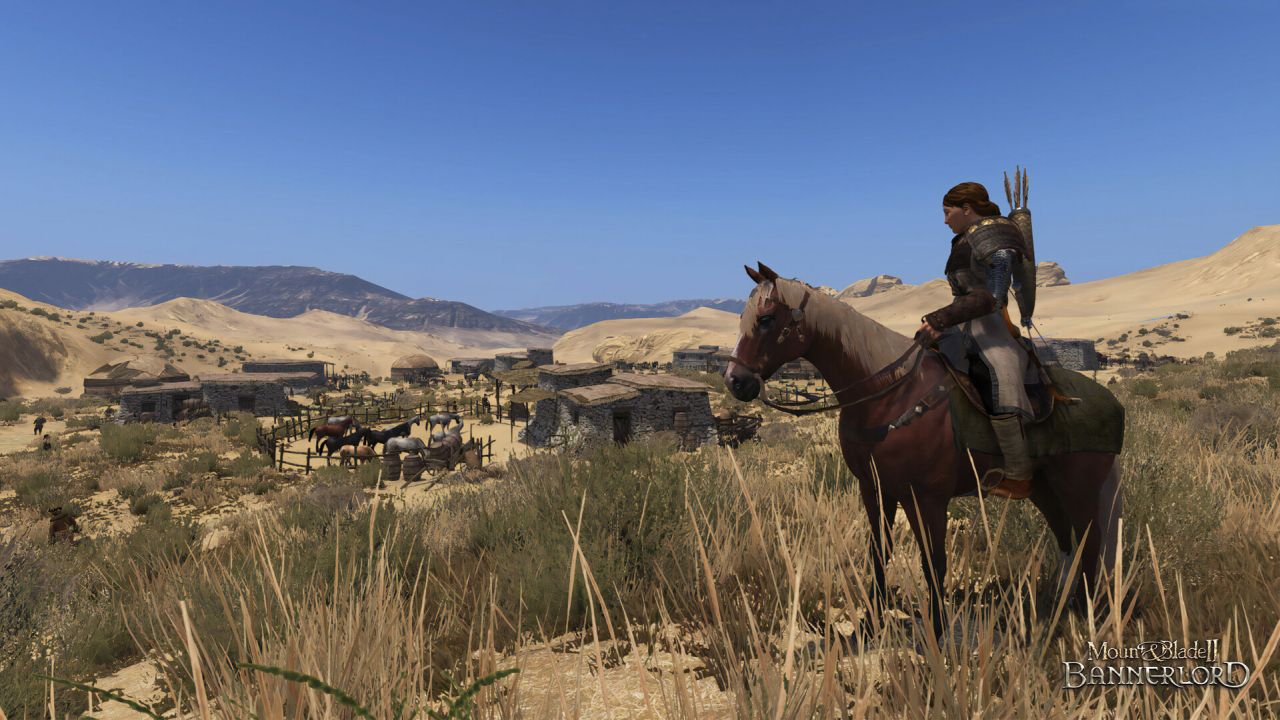
All of this, by the way, is not explained by any in-game tutorials or even tooltips, so you are left poking through the menus to see what is possible. For example, you learn that you can hire new companions in taverns, and then assign them roles in your army, such as quartermasters or doctors, to give passive bonuses. But these mechanics and UI menus are easily missed. You can create new groups within your army, and dispatch them to do some of those repetitive quests on your behalf. However, beyond that, the dialogue options are entirely copy-pasted, no matter if you're talking to your wife or a random other character, so there's a lot of depth lacking in the possible interactions. Every NPC that you can talk to is extremely one-dimensional and while the Encyclopedia claims they have certain RPG traits, such as being traitorous or dishonest, it does not seem to matter in any case. You can even have a relationship rating with every single NPC that you meet, but it again doesn't seem to affect much at all in terms of dialogue.
The other RPG element concerns your own hero, who has a wide variety of skills that can be developed. From combat to tactics, trade, and negotiation, you earn experience points over time and by performing actions corresponding to the skill. Overall experience points can be spent in each skill category to unlock further progress/tier within it and accelerate learning, but to actually increase your level in those categories you have to do the actions. For example, being skilled at archery requires you to actually use it during combat; gaining tactical experience necessitates issuing commands to your troops in battle, and so on. All skill trees have passive tiers, that when reached let you pick one of two passive bonuses; these include anything from higher army limits to improving your likability. Earning experience comes with a decent pace, but that's just one aspect of developing your character.
These are just a few of the key numbers to keep track of, as you strive towards whatever goals you've created for yourself. You also have to worry about your influence, which lets you eventually either join and grow your faction within a kingdom, and influence its decisions, or start your own and get others to join. Being part of a kingdom means you can eventually become a vassal and claim the spoils of war, such as getting towns and castles granted to you as fiefs. You can then assign a mayor to be in charge, dictate what improvements are to be built, and how large of a militia defensive force is needed. Managing the lands proves to be an annoyance, as they can frequently come under attack from other factions or simple bandits, and you can't easily outsource their defence to your troops. You could own shops or get involved in smithing. There are many things to consider in the grand scheme, and though many of these elements are not particularly deep, they create an overall strong impression of a medieval world.
But while there are a number of shortcomings in the grand strategy aspects of Bannerlord, one area where it succeeds is immersion. Players are actually able to visit the many towns and villages in-person, by loading them and walking around like in a typical third-person RPG. There's not much to do here – other than talk to NPCs or sit down – but with changing time of day, possible snow, and different styles of buildings, some of these visits can be quite immersive. And yes, just like the quests, many of the locations begin to repeat themselves, but at that time you can simply choose to interact with the NPCs from the menus, without having to load in and out of the 3D environment and finding them in-person. The other major reason to load into the 3D view is the other main gameplay aspect of the franchise, the combat.
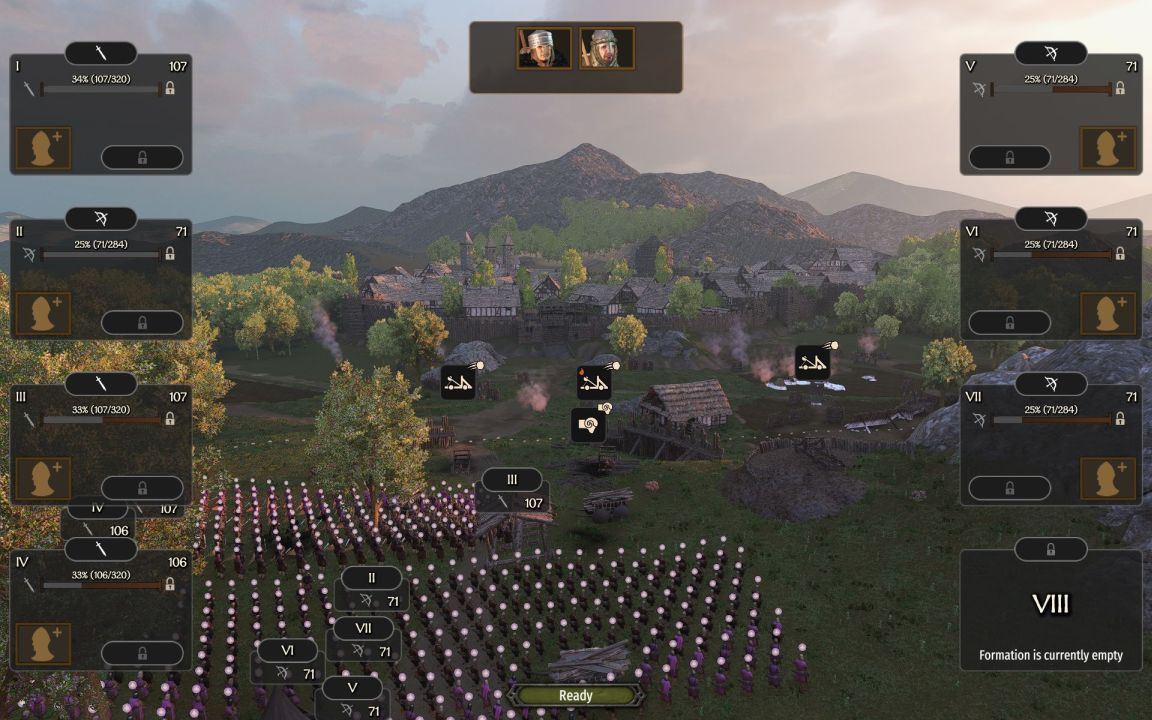
Similar to Chivalry and other melee fighting franchises, Bannerlord's one main tutorial does a good job of getting you familiar with how to swing a sword, defend yourself, ride a horse and fire arrows. The controls are decent and the actions carry a bit of weight; horse riding and archery also are satisfying. They lack the polish of higher budget releases that focus squarely on the combat, but they work well enough. But as hinted at earlier, while this tutorial is good and the combat works, it's not something that you will do often. Outside of choosing to have a one-on-one duel against a bandit leader or fighting in organized tournaments, as your troop size quickly grows, you will be most often preoccupied with organizing your troops than fighting directly. Indeed, as you wage into bigger and bigger conflicts, it makes little sense to dive into the fray and get hacked down by dozens of swords that are being swung in your direction. Instead you can use a keyboard-based command interface to have your groups get into formations, attack, move, and so on. Using the Function keys is cumbersome, and even though time slows when you try to issue orders, it's never very comfortable as you are still constrained to your view from atop the horse, and not at bird's eye height. A radial menu would have worked better, but the mouse controls are all taken up by the combat-related inputs, even if you don't plan to fight directly.
Indeed, the absolute best way to experience the grand scale of combat in Bannerlord is to join a larger AI-commanded army as another clan under their wing, and let the King in charge lead you into battle or siege. Participating in combat passively can be quite awe-inspiring, as you observe hundreds of soldiers on both sides maneuver into position, archers letting loose and cavalry smashing into the infantry. Of all the complexities of this title, its battles work shockingly well. They look, feel, and sound extremely immersive and cohesive. It's not something that can be experienced in any other game out there, and it works so well in creating a great sense of scale and immersion. For returning fans, sieges are much improved; you can now build relevant rams and structures before actually loading into the 3D battle and starting the siege. And again, the AI actually does well here, letting you observe and participate in a believable recreation of a siege assault involving up to 2000 troops. It's a sight to behold.
Combat can take a while, so if you feel that your army is strong and should have no issues winning, you can simply simulate the battles and get on with your day. Afterwards, you get some random prisoners and loot. Prisoners can include important NPCs, who you can even choose to execute, though the relationship penalty from all other characters makes it not worth doing. Prisoners can be ransomed in towns for coin, or you can keep them around long enough that they convert and become available to join your own troops. Dealing with loot is a bit more cumbersome. There are different filter options, but it still takes forever to buy and sell what you need in towns, down to the individual clothing items that you picked up. Clothing and weapons have typical stats, and you can choose what you wear into combat as well as when exploring in peace. The interface is decent overall, but could have been streamlined further.
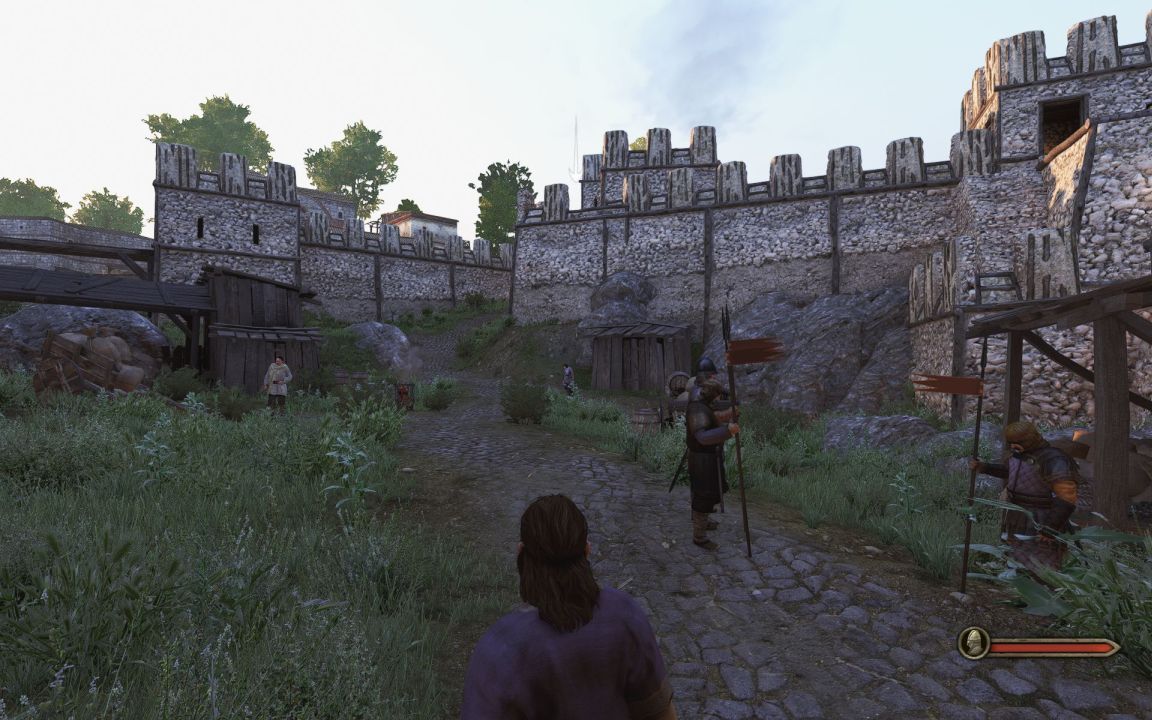
If you really love the battles and want to fight against other players, a multiplayer mode is available, though like with most RPGs/grand strategy games, it feels like a casual add-on. There are a few different modes, from team deathmatch to sieges with the help of AI troops, and it often reminds of Chivalry – but with horses, walls, more AI troops, and less polish and no dismemberment. It's a neat distraction to mess around with, and perhaps if you find a hardcore group of players who want to battle it can be an immersive thing to try, but otherwise there are better options out there for multiplayer medieval combat. You can also just play custom battles from the main menu.
The limited budget is also certainly visible across the presentation. The visuals are quite dated, in both the campaign map and on the fields of battle. Animations are crude and the backgrounds can at times be literally pixelated, such as during conversations with NPCs that also have roughly put together models. There is some voice acting, but it is very amateur and the game would have been better off sticking with just the text boxes. Loading times are also a problem; on an SSD the game takes a while to load initially, and there are notable pauses when switching to 3D world when going into a town or battle. For testing we moved the game to an HDD, and the loading times became even worse, with icons in inventory even taking a while to load in.
Even after a decade, Mount & Blade II: Bannerlord finds itself with a unique gameplay blend that nobody has tried to emulate. Its large medieval battles are the game's best feature, thanks to a fantastic sense of scale, strategic troop movement, and believable warrior behaviour. The grand strategy aspects are also commendable, if not very deep. The game has plenty of ambition that it is sadly not able to meet, thus leaving the world with a lot of copy-pasted content in order to fill the space. The campaign is disappointing in its lack of goals and guidance, and the presentation has a number of rough spots. The game has always had very strong mod support, so perhaps there is hope that the players will take it upon themselves to continue improving and expanding on the experience, as they have with Warband over the years. But the fact remains, this sequel feels a bit undercooked, and more like a promising sandbox, that could have used extra development time for more worthwhile structured content.
 Comments
Comments












